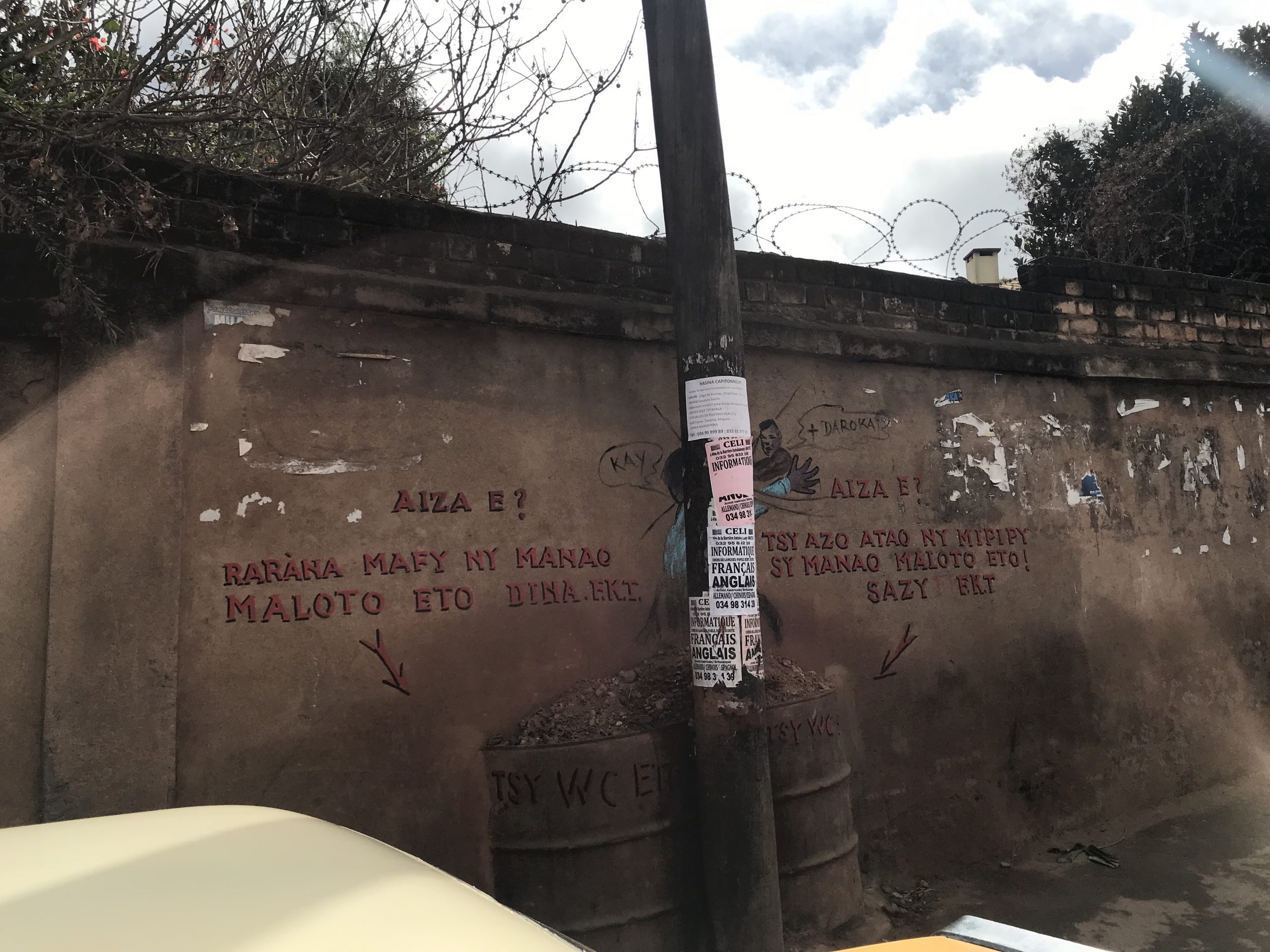Malagasy
Malagasy: Reading “On the Street” 1

I was walking back from the University of Antananarivo and saw this very interesting graffiti on a wall. It is especially interesting because this is an official graffiti, not vandalism. There are four parts:
- On the left, one block of text: “Aiza e? Rarana mafy ny manao maloto eto dina F.K.T.”
- On the right, another block of text: “Aiza e? Tsy azo atao ny miipy sy manao maloto eto! Sazy F.K.T.”
- Both blocks of text are followed by arrows pointing to some permanently filled barrels that merge into the wall, on which the text “Tsy WC eto” is written twice.
- Above and in the middle (and partly hidden behind a telephone pole) is a graphic showing one person getting slapped by another. The slapper says “+ Daroka!” and the recipient says “Kay”.
Here’s what the text means:
- Aiza e?
“Aiza” normally means “where”, while “e” is a phonetic transliteration of “eh”. Put them together, and the phrase is used to ask “What’s up?” - Rarana mafy ny manao maloto eto dina F.K.T.
“Rarana” means “forbidden” and “mafy” means “very” or “highly”; since “mafy” is an adverb, it goes (in Malagasy) after the adjective rarana.
“Maloto” means “to make dirty”. It can be used to describe littering, or more euphemistically to describe urination and defecation.
“Eto” means here.
“F.K.T.” is an abbreviation for “fokontany”, a regional government office that is the descendent of the traditional Malagasy village council. (You visit the fokontany for various official paperwork, e.g., registering as a resident of the neighborhood.)
All together, this sentence means “It is very forbidden to make this place dirty. [Violations] punished by the fokontany.” - Tsy azo atao ny miipy sy manao maloto eto! Sazy F.K.T.
“Tsy” means “no”.
“Azo” means “to be able to” or “to be allowed”.
“Atao” means “to be done”.
“Tsy azo atao” means “it is not allowed/permitted to do _____”.
“Miipy”, if you say it out loud, tells you what it’s referring to – peeing.
“Manao” means “to make”.
“Maloto” is “a mess”.
Altogether, it means “It is not permitted to pee or make a mess [e.g., littering or pooing] here. Punishment by the fokontany. - The cartoon…well, this is an interesting bit of humor! “Daroka” means “to hit” and “Kay” is the Malagasy equivalent of “Ow!” or “Ouch!” So it’s a sort of “Take that!” “Ow!” sequence of events, blending an official notice and elements from the Franco-Belgian graphic novel tradition.

